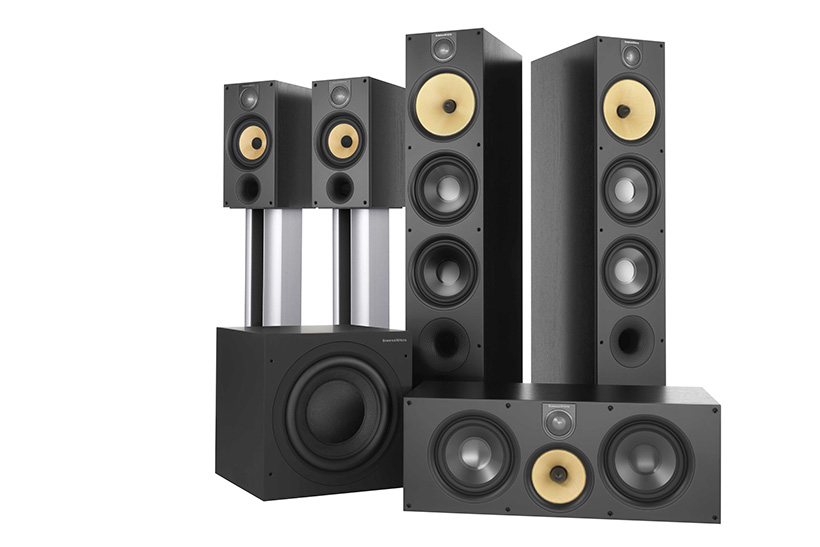Bowers & Wilkins most affordable ‘proper’ speakers, the 600, series has been totally revamped for its fifth incarnation. The series has been in the company’s range for 19 years now and was last revised back in 2007 when the FST midrange was introduced in the three-way 683. The new 600 series continues to trickle down technologies developed for Bowers’ more exotic models and this is nowhere more obvious than in the tweeter. The entire tweeter assembly is suspended in a gel ring, this is not apparent from its appearance but is obvious in the exploded view. It achieves a good degree of the isolation provided in the tweeter on top designs found at higher prices and, as Bowers shows in its measurements, quite a marked decrease in front baffle resonance as a result.
The tweeter itself has also had a significant modification; it has a two-part aluminium dome consisting of a 50 micron thick outer ring bonded to a 30 micron dome. The combination is both lighter and stiffer than the outgoing tweeter, taking its break up point from 30kHz to 38kHz and increasing sensitivity in the process. The tweeter has also got itself some protection in the form of a steel grille that was there when it was designed and which is not intended to be removed, but you can if you want to live dangerously. They are calling it the decoupled double dome tweeter, not 3D or triple D for that matter!

Taller, slimmer, betterer: 686, 684, HTM62 and ASW608 sub
Kevlar remains the material of choice for mid/bass duties but these drivers have been augmented with a foam dust plug that extends back into the voice coil former and reinforces its circular shape. This reduces resonance in the cone and results in a smoother overall response. The new 600 series continues to aluminium bass drivers in the three-way models, of which the 683 is the only stereo model. These have had the same treatment as the tweeter, an aluminium ring is bonded to the outer edge which stiffens the cone and again extends break up point, this time from 4kHz to 5.5kHz. The cones and faceplates of the tweeters are anodised to match the black or white baffles available on the new 600 series. They are available in two finishes; white or black ash.
There are four stereo models with the 686 standmount (£349) and 684 floorstander (£799) having 130mm (5inch) drivers and the 685 standmount (£499) and 683 three-way floorstander (£1149) running 165mm (6.5inch) drivers. Differences between this and the previous series are for the most part apparent in slimmer baffles and slightly taller cabinets, the 686 now has a front firing port for ease of placement and the 684 is now a two-way with twin woofers rather than a two and a half way. Bowers makes the STAV24 stand for the 686 and 685. There are two new centre channels that have been engineered to more closely resemble the stereo models for greater integration in home cinema set-ups: HTM62 (£349) with two 130mm woofers and HTM61 (£549) with twin 165mm aluminium bass drivers and a 130mm Kevlar midrange.

The bigger boys: 685, 683, HTM61 and ASW610XP sub
Listening to the new 600 series with a Rotel RCD-1570 CDP and RA-1570 amp/DAC in the compromised surroundings of a panelled hotel room it’s apparent that the 685 standmount delivers the most bang for your buck. It was the most popular model in the last series and has a good chance of maintaining that position. Bowers played Elvis Costello’s I Want You (Blood and Chocolate) on them to good enough effect to make me want to dig that album out. The smaller 686 standmount images well and did a fine job with the excellent Capitol Masters alt version of Mother Nature’s Son, a Bower’s R&D favourite, which did nothing to illuminate its relatively limited bottom end. The 684 floorstander is so skinny that it looks unstable but it’s probably the most nimble model in the range, the 683 is the opposite and will appeal to anyone that wants to move serious quantities of air. It was used to deliver Like a Dog Chasing Cars by Hans Zimmer (from Dark Knight), a typical blockbuster piece with too much thickener but at least a genuine orchestra, the big three-way didn’t break a sweat even at pretty high levels.


